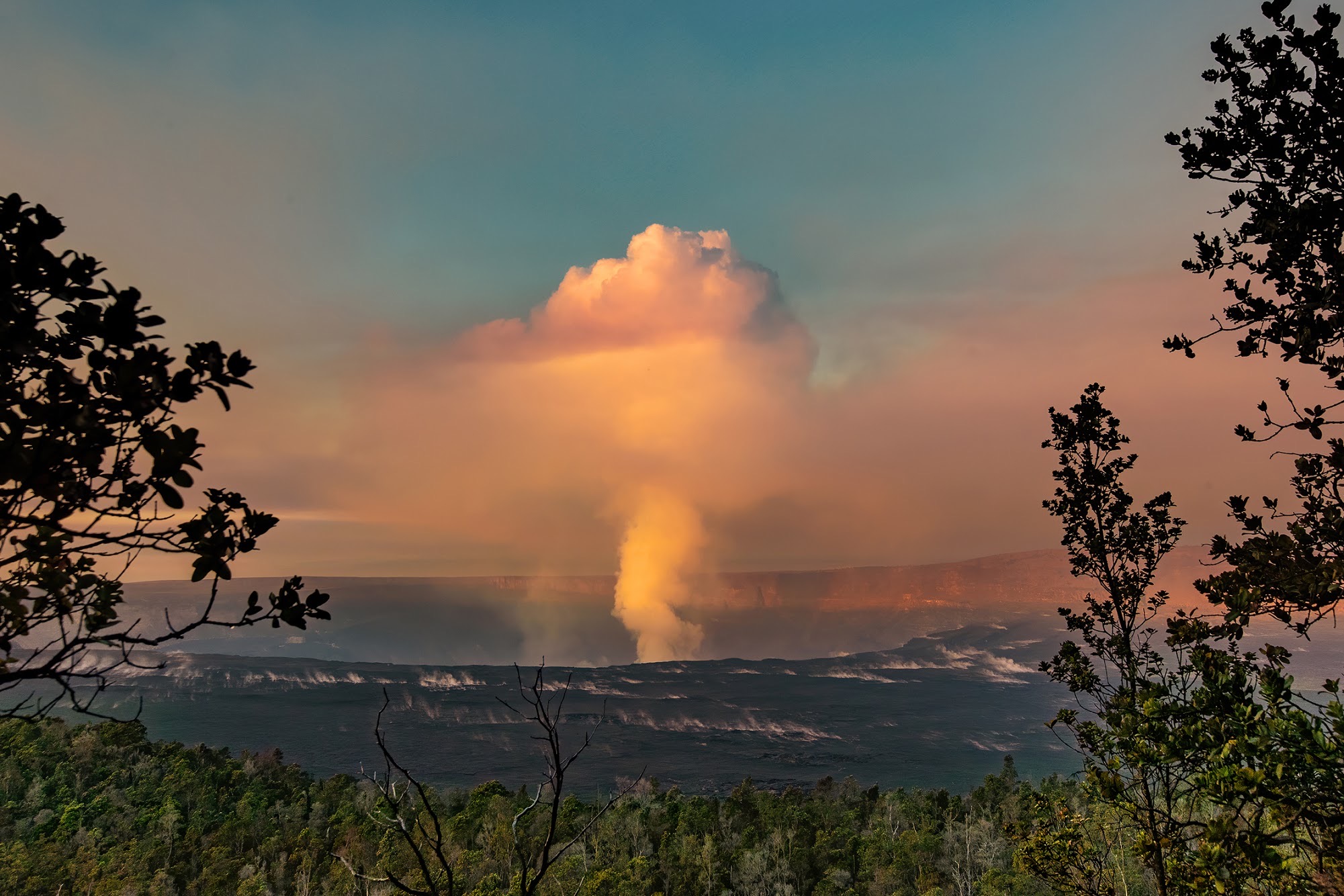News Release
You are viewing ARCHIVED content published online before January 20, 2025.
Please note that this content is NOT UPDATED, and links may not work. For current information,
visit https://www.nps.gov/aboutus/news/index.htm.

NPS Photo/J. Wei
|
Subscribe
|
Contact: Jessica Ferracane, 808-985-6018
Hawaii National Park, HAWAI‘I – Light winds on Wednesday carried with them a reminder that volcanic air pollution, or vog, is one of the serious hazards associated with the recent summit eruption of Kīlauea volcano.Earlier today, areas around the summit of Kīlauea were blanketed in high levels of sulfur dioxide (SO2) and particulates that reached levels established by the Environmental Protection Agency as hazardous for all individuals. The air quality index can be viewed on the park’s online air quality alert system, www.HawaiiSO2Network.com. Park staff immediately put up signs warning visitors of the deteriorating conditions, and issued alerts on its social media sites. Visitors are urged to plan their visit and check the air quality website before coming to the park. Even low levels of volcanic gas are a threat to those with heart or respiratory issues, infants, young children and pregnant women. Wednesday’s conditions were hazardous for everyone.
“This current eruption is more challenging than eruptions in the past because we have the added threat of COVID-19,” said Hawaiʻi Volcanoes National Park Superintendent Rhonda Loh. “When air quality is poor, visitors should get in their vehicles, turn on the air conditioner, and go to another area not impacted by volcanic gas. There are no safe options for visitors to seek shelter indoors in the park due to the pandemic,” Loh said.
Typically, the prevailing tradewinds from the northeast carry the plume of volcanic gas, water vapor and particulates being released by the eruption to the southwest and away from the summit. According to the U.S. Geologicial Survey Hawaiian Volcano Observatory, SO2 emissions remain high at around 30,000 tonnes a day.
For more information about current volcanic hazards and how to plan a safe trip to Hawaiʻi Volcanoes National Park, visit the park website,https://go.nps.gov/vxn5lh.
About the National Park Service. More than 20,000 National Park Service employees care for America’s 423 national parks and work with communities across the nation to help preserve local history and create close-to-home recreational opportunities. Learn more at www.nps.gov, and on Facebook, Instagram, Twitter, and YouTube.
Last updated: December 23, 2020
